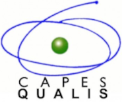Describing Photographic Objects
Thoughts and Resources for Their Recording in Computer Databases
Keywords:
photography, archives, databases, conservation, heritageAbstract
This article talks about difficulties detected when working with photographic archives and collections -both public and private- related to the processes of cataloging, managing, and accessing information of photographic objects, as well as their description through metadata schemes and vocabulary. Based on the latter, and via an interdisciplinary approach (archival studies, humanities, conservation, computer science), we offer a set of resources and guidelines that aim to facilitate both registering and accessing information related to photographic documents, considering their multiple dimensions and specificities. A detail of the local and international previous efforts and works that guided the elaboration of these tools is also presented. Moreover, fundamentals and technical definitions of the possibilities of computational databases are specified. Finally, the article seeks to show the importance of critical and contextualized thinking in the development and implementation of computer tools in photographic collections.
References
Boadas i Raset, J. et al. (2001). Manual para la gestión de fondos y colecciones fotográficas. CCG Ediciones.
Berry, D. (2011). The computational turn: thinking about the digital humanities. Culture Machine (12), 1-22. Disponible en: <https://sro.sussex.ac.uk/id/eprint/49813/>.
Centro de Fotografía de Montevideo. (s.f. a). Procedimientos fotográficos. Disponible en: <https://cdf.montevideo.gub.uy/investigacion/4>.
–––. (s.f. b). Catálogo de fotografías, ficha de descripción. Disponible en: <https://cdf.montevideo.gub.uy/catalogo/foto/03497fmhge>.
–––. (2017). Guía del archivo fotográfico del CdF. CdF ediciones. Disponible en: <https://issuu.com/cmdf/docs/guia>.
Collections Trust. (2008). Spectrum. Disponible en: <https://collectionstrust.org.uk/spectrum/>.
Dot, A. y Santa Olalla, P. (2020). Noise Management in the Archival Ecosystem: Debating Principles for Classification. En K.
Brown, The Routledge Companion to Digital Humanities and Art History (pp. 178-188). Routledge.
Getty Research Institute. (2017). Getty Art and Architecture Thesaurus. Disponible en: <https://www.getty.edu/research/tools/vocabularies/aat/>.
–––. (2019). Categories for the Description of Works of Art (CDWA). Disponible en: <https://www.getty.edu/research/publications/electronic_publications/cdwa/definitions.pdf>.
Jaskot, P. (2020). Digital Methods and the Historiography of Art. En K. Brown, The Routledge Companion to Digital Humanities and Art History (pp. 9-17). Routledge.
Jürgens, M. (2009). The digital print: identification and preservation. Getty Conservation Institute.
Labraga, D. y Burgos, M. J. (2020). Urgente / Emergente. Por un futuro de los archivos fotográficos. Fundación Alfonso y Luz Castillo.
Lavédrine, B. (2009). Photographs of the Past. Process and Preservation. Getty Conservation Institute.
–––. (2004). A Guide to the Preventive Conservation of Photograph Collections. Getty Conservation Institute.
Ministerio de Cultura y Deporte de España. (s.f. a). Tesauros del Patrimonio Cultural de España. Disponible en: <http://tesauros.mecd.es/tesauros/tesauros>.
–––. (s.f. b). Plan Nacional de Conservación del Patrimonio Fotográfico. Disponible en: <https://www.culturaydeporte.gob.es/planes-nacionales/planes-nacionales/conservacion-patrimonio-fotografico.html>.
Nazar, M. (2010). Archivos, memoria y derechos: reflexiones en torno al caso argentino. Comma, (2), 145-158.
Pavao, L. (2002). Cuadernos Técnicos. Conservación de Colecciones de Fotografía. Junta de Andalucía, Consejería de Cultura, Instituto Andaluz del Patrimonio Histórico y Editorial Comares.
Parikka, J. (2012). What Is Media Archaeology? Polity Press.
Pénichon, S. (2013). Twentieth-Century Color Photographs: Identification and Care. Getty Conservation Institute.
Pittaluga, R. (2007). Notas a la relación entre archivo e historia. Políticas de la Memoria (6/7), dossier Archivos del Sur, 199-205.
Presner, T. (2010). Digital Humanities 2.0: A Report on Knowledge. En M. Bailar (Ed.), Emerging Disciplines: Shaping New Fields of Scholarly Inquiry in and beyond the Humanities (pp. 27-38). Rice University Press.
Priamo, L. (1997). Situación de la conservación fotográfica en la Argentina (documento inédito).
–––. (1998). La fotografía en los museos argentinos (documento inédito).
Secretaría de Patrimonio Cultural del Ministerio de Cultura de la Presidencia de la Nación. (2020). La fotografía en los museos nacionales. Guía para su difusión y acceso. Tomo I. Ministerio de Cultura de la Nación, Secretaría de Patrimonio Cultural.
Secretaría de Economía de México. Dirección General de Normas. (2016). Norma Mexicana NMX-R-069-SCFI-2016. Documentos fotográficos - Lineamientos para su catalogación. Disponible en: <http://fotobservatorio.mx/norma_mexicana.html>.
Wellington, R. (2020). Metadata, Material Culture, and Global Art History. En K. Brown, The Routledge Companion to Digital Humanities and Art History (pp. 326-337). Routledge.












